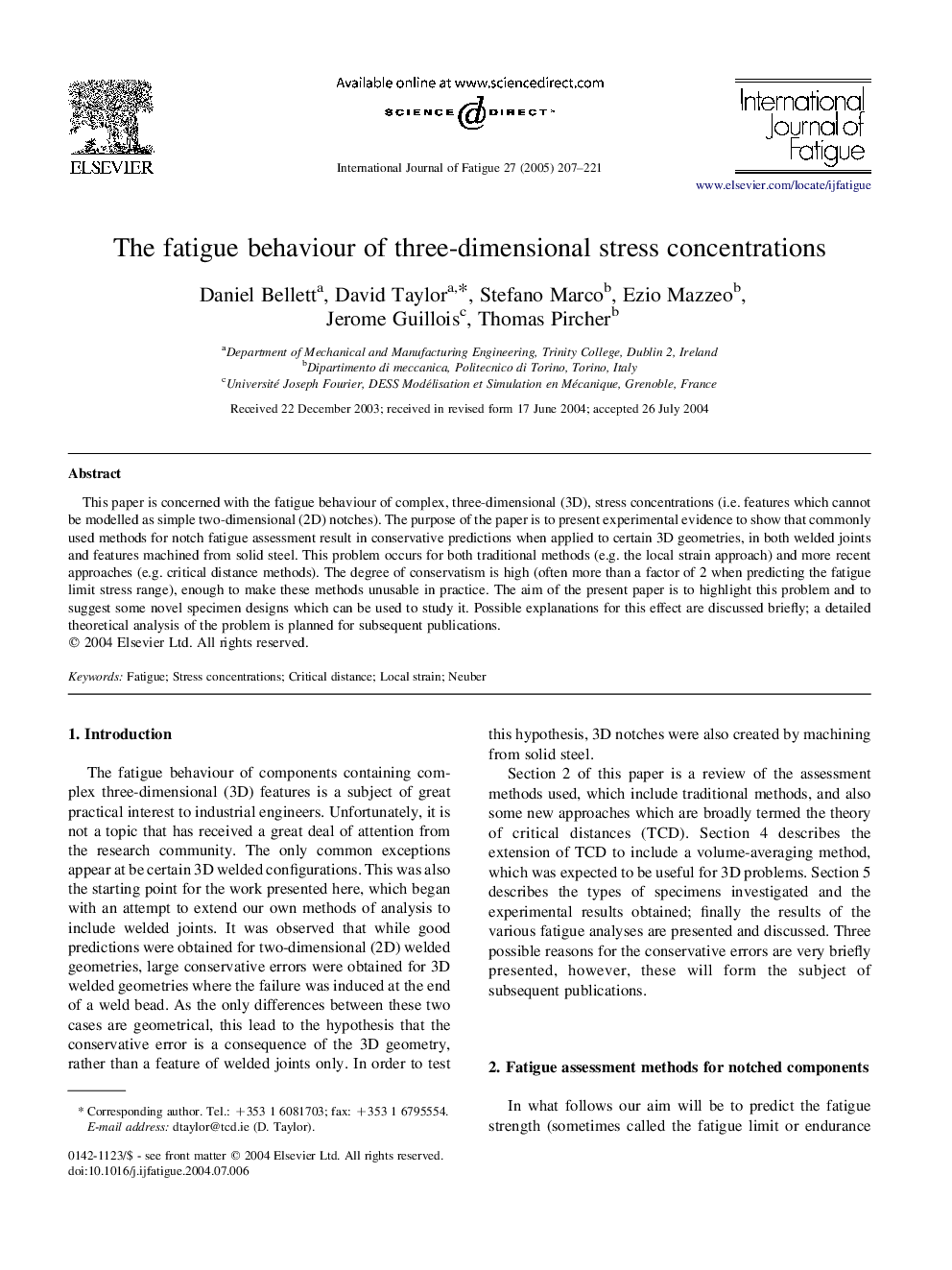| Article ID | Journal | Published Year | Pages | File Type |
|---|---|---|---|---|
| 9703997 | International Journal of Fatigue | 2005 | 15 Pages |
Abstract
This paper is concerned with the fatigue behaviour of complex, three-dimensional (3D), stress concentrations (i.e. features which cannot be modelled as simple two-dimensional (2D) notches). The purpose of the paper is to present experimental evidence to show that commonly used methods for notch fatigue assessment result in conservative predictions when applied to certain 3D geometries, in both welded joints and features machined from solid steel. This problem occurs for both traditional methods (e.g. the local strain approach) and more recent approaches (e.g. critical distance methods). The degree of conservatism is high (often more than a factor of 2 when predicting the fatigue limit stress range), enough to make these methods unusable in practice. The aim of the present paper is to highlight this problem and to suggest some novel specimen designs which can be used to study it. Possible explanations for this effect are discussed briefly; a detailed theoretical analysis of the problem is planned for subsequent publications.
Related Topics
Physical Sciences and Engineering
Engineering
Mechanical Engineering
Authors
Daniel Bellett, David Taylor, Stefano Marco, Ezio Mazzeo, Jerome Guillois, Thomas Pircher,
